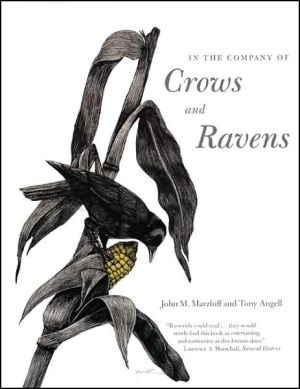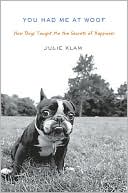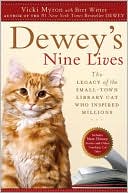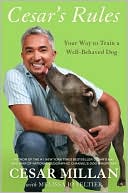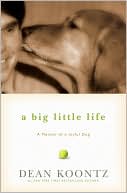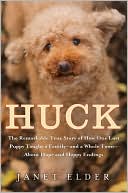In the Company of Crows and Ravens
From the cave walls at Lascaux to the last painting by Van Gogh, from the works of Shakespeare to those of Mark Twain, there is clear evidence that crows and ravens influence human culture. Yet this influence is not unidirectional, say the authors of this fascinating book: people profoundly influence crow culture, ecology, and evolution as well. Examining the often surprising ways that crows and humans interact, John Marzluff and Tony Angell contend that those interactions reflect a...
Search in google:
“Crows and people share similar traits and social strategies. To a surprising extent, to know the crow is to know ourselves.”—from the PrefaceFrom the cave walls at Lascaux to the last painting by Van Gogh, from the works of Shakespeare to those of Mark Twain, there is clear evidence that crows and ravens influence human culture. Yet this influence is not unidirectional, say the authors of this fascinating book: people profoundly influence crow culture, ecology, and evolution as well.John Marzluff and Tony Angell examine the often surprising ways that crows and humans interact. The authors contend that those interactions reflect a process of “cultural coevolution.” They offer a challenging new view of the human-crow dynamic—a view that may change our thinking not only about crows but also about ourselves.Featuring more than 100 original drawings, the book takes a close look at the influences people have had on the lives of crows throughout history and at the significant ways crows have altered human lives. In the Company of Crows and Ravens illuminates the entwined histories of crows and people and concludes with an intriguing discussion of the crow-human relationship and how our attitudes toward crows may affect our cultural trajectory. Library Journal Savage, Candace. Crows: Encounters with the Wise Guys of the Avian World. Greystone, dist. by Publishers Group West. Oct. 2005. illus. index. ISBN 1-55365-106-5. $20. NAT HIST Even the most ornithologically challenged recognize and notice crows-they're big and black, loud, social, and smart. Now come two superb studies that should deepen our understanding, and perhaps appreciation, of these fascinating birds and their corvid cousins, ravens. Marzluff (wildlife science, Coll. of Forest Resources, Univ. of Washington) and artist Angell aim for readers to get to know the "whole animal." To that end, these intrepid researchers go to extraordinary lengths, even eating crow (literally: they claim it is scrumptious). Their book offers a satellite view of the corvid bird family, but pays particular attention to the American Crow-its evolution, biology, complex social rituals, tool-handling capabilities, and communication skills. The authors are especially interested in the changing relationships between humans and corvids across time and place, how our culture has affected crows, and how crow "culture" has affected us. In particular, they advance the idea of "cultural coevolution," wherein interaction between corvids and humans leads to social learning and the evolution of each group's culture. Savage (Bird Brains: The Intelligence of Crows, Ravens, Magpies and Jays) offers a witty life history of the crow interlaced with stories, poems, songs, and pictures that support the bird's strong mythic hold on the human imagination over the course of our shared history. (She also helps us appreciate researchers' struggle to turn trickster crows into cooperative study subjects.) Though Angell's more than 100 charming drawings and the authors' clear zest for their subjects may lend In the Company of Crows and Ravens popular appeal, this is a serious book well suited for academic or large public collections. Brief and beautifully illustrated, Crows, on the other hand, is a more accessible book and a perfect choice for general collections. But readers of either book are very likely to agree with Savage that "any day with a crow in it is full of promise."-Robert Eagan, Windsor P.L., Ont. Copyright 2005 Reed Business Information.
In the Company of Crows and Ravens\ \ By John M. Marzluff Tony Angell \ Yale University Press\ Copyright © 2005 Yale University\ All right reserved.\ ISBN: 978-0-300-12255-8 \ \ \ Chapter One\ It's midmorning, and a single crow has arrived unseen to parade about the lawn outside our open window. Failing to arouse us with visual cues, the crow leaps to the outside railing and calls: two loud, sharp caws in succession. Alerted, we look up from our work, and one of us walks obediently to the kitchen to retrieve a previously saved crust of bread. This morning ritual of bread-fetching for our saucy friend has been going on long enough to become habit. \ A subtle transaction has occurred between two species that routinely find themselves sharing common ground. A crow has influenced what we do, and we have affected its behavior. Leaving aside the possibility that the crow has derived some twisted satisfaction in first startling and then manipulating us, the bird has certainly benefited from the delivered meal, and we have been rewarded by an intimate moment with another species, not to mention the peace and quiet that ensued once the crow was fed. A good argument can be made that we have trained each other to behave in a way that is mutually beneficial. At first such an esoteric benefit to a person may seem insignificant, but even brief encounters with crows can be powerful. Robert Frost commemorated his crow moment in his poem"Dust of Snow," which we reproduce as our epigraph to this volume.\ Let your mind wander a bit now and consider our language, art, culture, and religion. They have all been influenced over the ages by our interactions with crows. Likewise, crows have benefited enormously by associating with people. We have reduced many of their natural predators and issued royal, political, and religious edicts that have forbidden the killing of some crows. Many of the various species known generally as "crows" are provisioned on massive scales by our agricultural and urban wastes. Is this a uniquely strong and positive relationship between people and a wild animal? We think it is.\ Crows and people are engaged in a type of mutualism somewhat akin to the one between shark and remora or clownfish and sea anemone that you may have learned about on popular television nature shows. Just like the shark that provides its gills, mouth, and other body parts as foraging sites for a remora in exchange for parasite removal, we, by choice or circumstance, provide living space and food for crows in exchange for intellectual, emotional, and aesthetic stimulation. We may also reap direct benefits as crows clean our environments of wastes and pests, and by observing their behavior and noting their mortality, we are warned of harmful pathogens like rabies and West Nile virus. We wrote this book to illustrate and document this apparent mutualism, as well as other positive and negative interactions between crows and people. Our suggestion that a portion of the relationship represents a novel evolutionary force, one we term cultural co-evolution, is a new hypothesis we introduce in the first chapters and explore throughout the book.\ Our fascination with crows runs deep. But are we unusual for our species? Perhaps we are rare in the extent to which we engage our black-feathered neighbors, but our research suggests that strong interactions between crows and people are anything but unusual. We are convinced that crows and people share a long and storied history-a history that probably started among ancestral crows and our primate ancestors and that has subtly molded both crows and people.\ Is this history so obvious that it requires no elaboration? Many would question the need for a whole book about crows. Arthur Cleveland Bent, one of the leading chroniclers of bird lore in the twentieth century, wrote: "If a person knows only three birds one of them will be the crow." What he really meant, though, was that everyone recognizes the crow. To us this is not the same as knowing the crow. Our neighbors often remark that they can tell us everything we need to know about crows in just a few words. They are "noisy," "destructive," "dirty," "aggressive," and, yes, "clever" ! This epitomizes many people's views of crows as pests, elusive targets for shooters, consumers of songbirds, garden raiders, and symbols of death and filth. And yet others have and do revere crows as spiritual totems, admire their sagacity, and find amusement in their playful and problem-solving antics. In our experience, few people hold no opinion about crows. Crows' conspicuous, bold, and brash ways make most people take notice and form opinions. Differing points of view result because we all know, or respond most strongly to, only a part of the crow. Here we attempt to meld the various facets of the crow so that you can indeed know the whole animal.\ Are the various impressions about crows simply a reflection of the variety of crow species around the world, or are all "crows" viewed similarly? Our research suggests that most of the forty-six species generally known as "crows," including actual crows, Rooks, jackdaws, and ravens, are viewed similarly by most people. Many have been both loved and hated through history. Contrasting their ecologies in interactions with people allows us to weave a richer story. For clarity, however, we use lowercase to refer to general and inclusive groups of species like crows and ravens but capitalize names when we refer to a specific species, such as the Common Raven or American Crow.\ Crows and people interact in a variety of influential ways. We detail four basic relationships between crows and people in the chapters that follow. We open with a close look at the influences people have on crow evolution and ecology. Next we examine what crows have done to influence human cultures throughout the world. We follow this with a detailed look at the cultural life of crows, exploring their behavior and traditions and our influences on them. Last, we open a discussion of what crows seem to be doing to affect our ecology and evolution, and we pose some of the still-unanswered questions about crows that make them such an intriguing subject of study. We include an appendix with suggestions on how you can help answer some of these questions inasmuch as this demonstration of mutual influence is just beginning to be understood and it is quite clearly an ongoing and evolving phenomenon. In summarizing a unique history of association, we make the case for cultural coevolution between crows and people. Along the way we reveal the diverse culture, behavior, intelligence, and adaptability of crows and depict their elegance and ecological role.\ Our transition from a historical association with ravens to a contemporary world where crows are our main associates provides the second organizational thread to our story. We first review interactions among people and crows on many continents, emphasizing how these species and people influenced one another. As we delve deeper into the relationship between crows and people, we focus more narrowly on American Crows (Corvus brachyrhynchos) and modern North Americans. Through this single common species we can explore and understand many of the social strategies, physical attributes, and examples of intelligence that have contributed to this bird's extraordinary success amid a world of change. Along the way, we discover that crows and people share similar traits and social strategies. To a surprising extent, to know the crow is to know ourselves.\ As we think about people's interactions with crows, we must ask some difficult, soul-searching questions that may refine our attitudes and values toward other animals. Because crows have been so successful at exploiting our excesses, some people view them as serious pests. Increasingly, crow populations are being controlled through lethal means, which forces society to argue about the ethics of killing crows and other cognitive creatures. The resolution of such arguments may ultimately help form an ethic that greatly affects our cultural trajectory. Will we be quick to pull the trigger or will we think about how best to balance our effects on the ecosystem? Are we conquerors or stewards of nature? Knowing the crow argues for stewardship, if only for a selfish reason. Simply stated, to conquer the crow is to stifle one of our powerful and long-standing cultural motivators. Our art, religion, literature, language, and music all draw on crows for inspiration. Life without such inspiration would be less creative, less imaginative, and less mysterious. Our investigations of crows and people have convinced us that people need crows specifically, and nature generally, if we are to maintain a vibrant culture. After reading our story, we hope you agree.\ (Continues...)\ \ \ \ \ Excerpted from In the Company of Crows and Ravens by John M. Marzluff Tony Angell Copyright © 2005 by Yale University. Excerpted by permission.\ All rights reserved. No part of this excerpt may be reproduced or reprinted without permission in writing from the publisher.\ Excerpts are provided by Dial-A-Book Inc. solely for the personal use of visitors to this web site. \ \
Foreword1Cultural connections12A crow is a crow, or is it?363Intertwined ecologies and mutual destinies804Inspiration for legend, literature, art, and language1085The social customs and culture of crows1526Communication and culture1967Reaping what we sow2188Centering the balance2539Future interactions281App. 1Making observations to learn more303App. 2Children's books that involve crows and ravens308
\ Library JournalSavage, Candace. Crows: Encounters with the Wise Guys of the Avian World. Greystone, dist. by Publishers Group West. Oct. 2005. illus. index. ISBN 1-55365-106-5. $20. NAT HIST Even the most ornithologically challenged recognize and notice crows-they're big and black, loud, social, and smart. Now come two superb studies that should deepen our understanding, and perhaps appreciation, of these fascinating birds and their corvid cousins, ravens. Marzluff (wildlife science, Coll. of Forest Resources, Univ. of Washington) and artist Angell aim for readers to get to know the "whole animal." To that end, these intrepid researchers go to extraordinary lengths, even eating crow (literally: they claim it is scrumptious). Their book offers a satellite view of the corvid bird family, but pays particular attention to the American Crow-its evolution, biology, complex social rituals, tool-handling capabilities, and communication skills. The authors are especially interested in the changing relationships between humans and corvids across time and place, how our culture has affected crows, and how crow "culture" has affected us. In particular, they advance the idea of "cultural coevolution," wherein interaction between corvids and humans leads to social learning and the evolution of each group's culture. Savage (Bird Brains: The Intelligence of Crows, Ravens, Magpies and Jays) offers a witty life history of the crow interlaced with stories, poems, songs, and pictures that support the bird's strong mythic hold on the human imagination over the course of our shared history. (She also helps us appreciate researchers' struggle to turn trickster crows into cooperative study subjects.) Though Angell's more than 100 charming drawings and the authors' clear zest for their subjects may lend In the Company of Crows and Ravens popular appeal, this is a serious book well suited for academic or large public collections. Brief and beautifully illustrated, Crows, on the other hand, is a more accessible book and a perfect choice for general collections. But readers of either book are very likely to agree with Savage that "any day with a crow in it is full of promise."-Robert Eagan, Windsor P.L., Ont. Copyright 2005 Reed Business Information.\ \ \ \ \ Bernd Heinrich“Crows and ravens stir up much interest, precisely for the reasons John Marzluff and Tony Angell give in this handsomely illustrated work.”—Bernd Heinrich, author of Mind of the Raven\ \ \ from the preface“Crows and ravens stir up much interest, precisely for the reasons John Marzluff and Tony Angell give in this handsomely illustrated work.”—Bernd Heinrich, author of Mind of the Raven\ \ \ \ \ Gordon H. Orians"With engaging prose and compelling art, the authors tell us how our interactions with other species, especially crows and ravens, have influenced both us and them over the ages . . . . If you believe that we have great impacts on other species but that they have influenced us relatively little, then you should read this delightfully written and illustrated book."—Gordon H. Orians, University of Washington\ \ \ \ \ Nathan Emery"Throughout human history, crows have been reviled and revered in equal measure. Now the corvids of folklore and fable are living up to their reputation for cleverness, trickery and ingenuity. Marzluff and Angell's wonderful book is a user's guide to the biology and culture of these fascinating animals and a testament to man's affinity with nature."—Nathan Emery, University of Cambridge\ \ \ \ \ Nicola Clayton"Members of the crow family (corvids), which include ravens, jays and magpies, as well crows, have the reputation of being mischievous, machaevellian creatures, who steal other birds' eggs and raid agricultural crops. But these covids are also reknowned for their wisdom as well as their deceit. This fascinating book describes not only the role corvids have played in our folklore but more generally how corvids have influenced human culture and the impact of humans on corvids. I hope this book will afford corvids the respect they deserve."—Nicola Clayton, University of Cambridge\ \ \ \ \ Noble S. Proctor"This is the most detailed account I know of concerning crows and their interaction with man. A very readable and thought-provoking book!"—Noble S. Proctor, Ph.D., author of Manual of Ornithology and A Field Guide to North Atlantic Wildlife\ \ \ \ \ Paul Ehrlichfrom the forewordPaul Ehrlich“This book is the first to produce a grand overview of the human-corvid complex and is truly something to crow about.With any luck In the Company of Crows and Ravens will stimulate more people to connect with nature by enjoying the antics of these easily observed birds.”—from the foreword by Paul Ehrlich, coauthor of Wild Solutions\ \ \ \ \ \ Booklist"[A] delightful blend of science, art, and anthropology."—Booklist\ \ \ \ \ Los Angeles Times Book Review\ - Susan Salter Reynolds\ "Sleek, evocative illustrations—a mysterious light seems to come directly from the eyes and feathers of these birds."—Susan Salter Reynolds, Los Angeles Times Book Review\ \ \ \ \ Wilson Quarterly\ - Roxana Robinson\ "The authors' systematic exploration of this history is handsomely complemented by dozens of Angell's pen-and-ink drawings."—Roxana Robinson, Wilson Quarterly\ \
